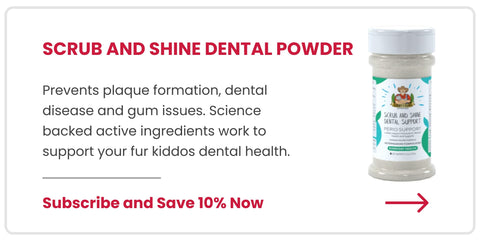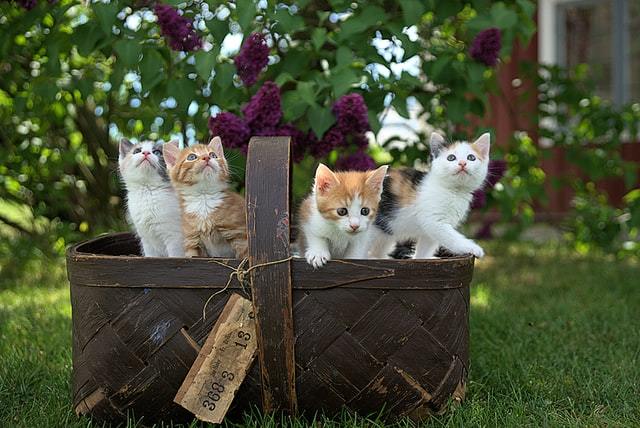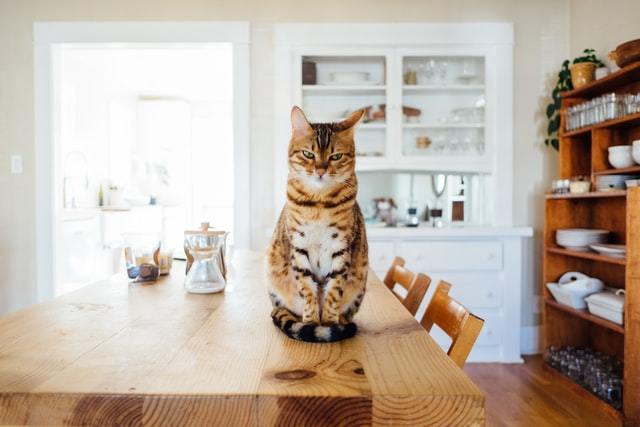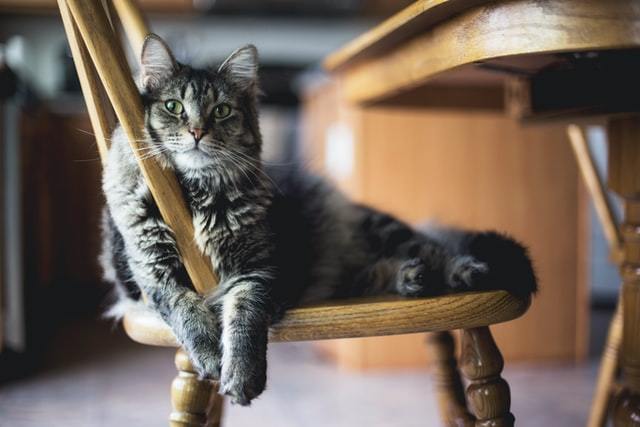Dental disease in cats is prevalent but not easy for owners to spot. It is not unheard of for an owner to bring their cat into the clinic for something unrelated, only to leave with a diagnosis of dental disease.
While signs aren’t always obvious, this article aims to give you the tools to determine when something is not right in your kitty’s mouth. We talk you through the most common symptoms and the best treatment options. Read on to learn more about feline dental disease and what may need to be done.
What are the Signs of Dental Disease in Cats?
Cat dental disease, frustratingly, is not always easy to pick up on. However, there are certain ‘tell-tale’ signs which all owners should be aware of. These include:
1. Decreased interest in eating dry food and hard treats
As it hurts the cat to chew on harder kibble, you may find that they stop doing so altogether. Rather, they will go for the ‘easier’ option of wet cat food or soft treats. This change can occur slowly over time and some owners may mistake it as ‘their cat becoming fussy in their old age’.
2. Bad breath
When a cat has periodontal disease, bacteria levels will rise and can lead to some nasty breath. According to a study published in ‘Archives of Oral Biology’, those with advanced dental disease tend to have more anaerobic, gram negative bacteria. This type of bacteria is notorious for producing a foul odour.
3. Chewing more slowly than usual
It is not surprising that a cat will be tentative when they are experiencing oral discomfort. They will be keen to avoid any sharp jolts of pain. As the cat manipulates the food around their mouth, avoiding the worst affected teeth, it will take them some time to finish their meal. An owner may find that their cat is spending more time around their food bowl.
4. Dropping food from the mouth while chewing
When a cat has advanced dental disease, they may even struggle to keep the food within their mouth. You may find that they drop unchewed or chewed-up food out without meaning to. These pieces of food may lay scattered around the bowl, or the cat may eventually eat them.
5. Excessive drooling
Some of those with periodontal disease will struggle to swallow as often as they should. When swallowing causes pain, they may choose to drool instead. This drool may smell bad and might contain blood or even pus. A cat who is drooling a lot will have a wet chin and their facial fur sometimes looks unkempt and greasy.
6. Pawing at the mouth
Pawing at the mouth is usually a late symptom of dental disease in cats. Most are independent critters that don’t like to draw attention if something isn’t right. They may paw at the inflamed tissue in an attempt to alleviate the ache. If your cat paws at their mouth a lot, the fur on their leg may be chronically wet and stained.
7. Weight loss
Weight loss is not something we would expect to see except in those with advanced dental disease. Weight loss has occurred because the cat is not able to consume the amount of calories that they need. While they may be hungry, they will choose not to eat due to the hurt it causes.
Remember, weight loss can have many other causes, especially in an older feline.
Why is it Hard to Detect Cats Dental Disease?
Cats are masters at hiding signs of pain or unease. They would rather hide away under a bed than ask us for comfort or help. As the teeth and gums are inside a cat’s mouth, we rarely get a good view of them. Cats are less likely than dogs to lick us or mouth our skin, meaning we seldom get to see their pearly whites.
Most cats, whether they have a sore mouth or not, do not want us poking our fingers anywhere near them. This is especially true for anxious cats. Many owners do not feel confident checking their cat’s mouth.
Oftentimes, the issue is below the root and not easily visible. That is why dental radiographs are commonly recommended. According to a study published in the ‘Small Animal Practice’ journal on the importance of oral x-rays, ‘It is not possible to accurately assess (dental disease) without it.1

What is the Best Treatment for Cats With Dental Disease?
A dental treatment performed by a veterinary professional is the only real treatment option. Cleaning and extracting diseased teeth must always be performed under anaesthetic. This is discussed in more detail by International Cat Care here. The sooner we address the issue, the less chance for the disease to progress.
Importantly, many owners of elderly cats are unsure about putting them through an anaesthetic. If the cat is otherwise healthy, the benefit of the dental therapy will usually outweigh the risk. Discuss any concerns with your vet and make a plan that ensures your cat will be well taken care of. Sensible precautions that can be taken include:
-
Taking pre-anaesthetic bloods
-
Providing intravenous fluids
-
Monitoring blood pressure during the procedure and recovery period
Tooth brushing and feline friendly mouthwashes play a role in the management of dental disease. However, they cannot treat the problem once it has been established. Rather, they can be used to maintain good oral hygiene once the periodontal disease has been successfully treated by a vet.
Cat teeth problems must not be ignored and the sooner they are treated, the better for the cat’s health and quality of life. It is not always easy to pick up on the signs, especially in the earlier stages of dental disease. Be on the lookout for signs such as bad breath, red gums and drooling. If concerned, schedule a vet appointment right away.
References
- https://europepmc.org/article/med/23643020
- https://www.sciencedirect.com/science/article/abs/pii/0003996988901239
- https://www.sciencedirect.com/science/article/abs/pii/0003996988901239#
- https://icatcare.org/advice/dental-disease-in-cats/
Dr. Linda Simon, BVMS, MRCVS
Veterinary surgeon,Dr. Linda Simon MVB MRCVS is a locum veterinary surgeon who has worked in London for the past 8 years. She graduated top of her class in small animal medicine from UCD, Dublin. She is currently a member of the Royal College of Veterinary Surgeons.




